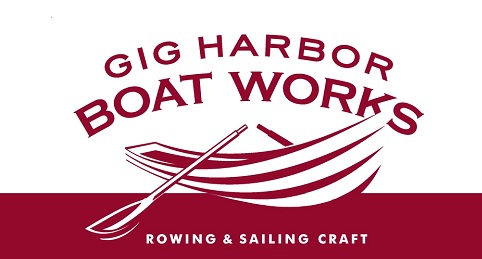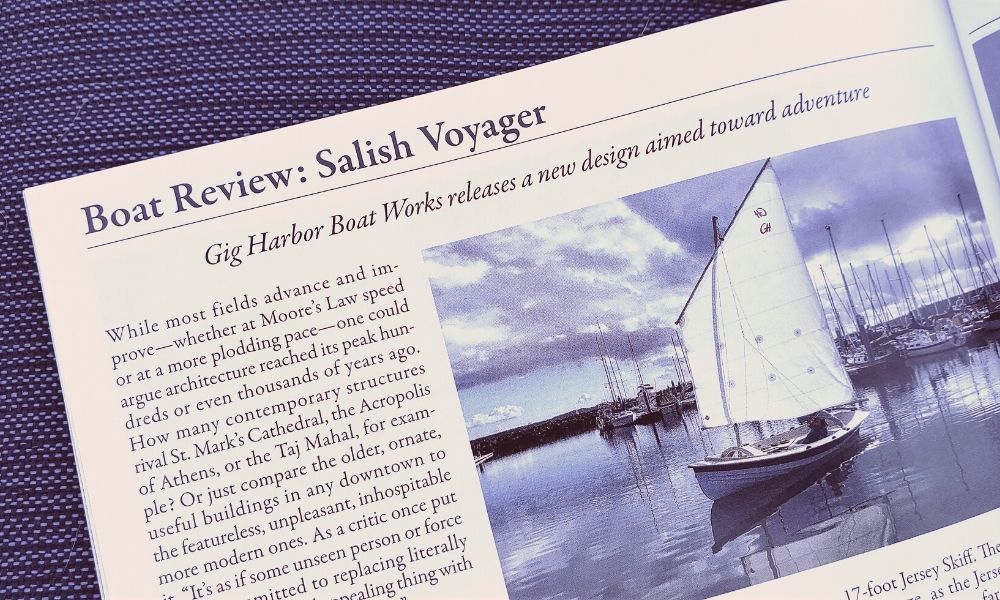For those of you who may have missed the Jan/Feb 2021 issue of Small Craft Advisor Magazine, our new 17′ Salish Voyager got the cover photo and an 8-page feature with their review! It opens with a great overview of the story of why and how we developed this new design for adventure-seeking boaters, including an interview with our founder Dave Robertson.
“Our decision to build the Salish Voyager resulted from many requests from customers who desired a vessel with expedition capacity that was a true sailboat and no-compromise solo or tandem sliding-seat rowboat,” Robertson says. “The Voyager sails like a razor through velvet and rowing is smooth and powerful. Time will tell if we have built another ‘classic,’ but I think we’re close.”
The article highlights our approach to meeting these objectives, combining the Jersey Skiff hull with the balanced lug rig on our fiberglass SCAMP and the tandem sliding rowing seats of our Melonseed. Our head designer for this project, Falk Bock, was “determined to make the new Salish Voyager as seaworthy and capable as possible, with features like seven discrete lockers, loads of sealed flotation, and a self-bailing (venturi bailer) bilge well aft.”
So, what did the Small Craft Advisor crew think? We’ve pulled out a few choice quotes below…
Rowing Performance
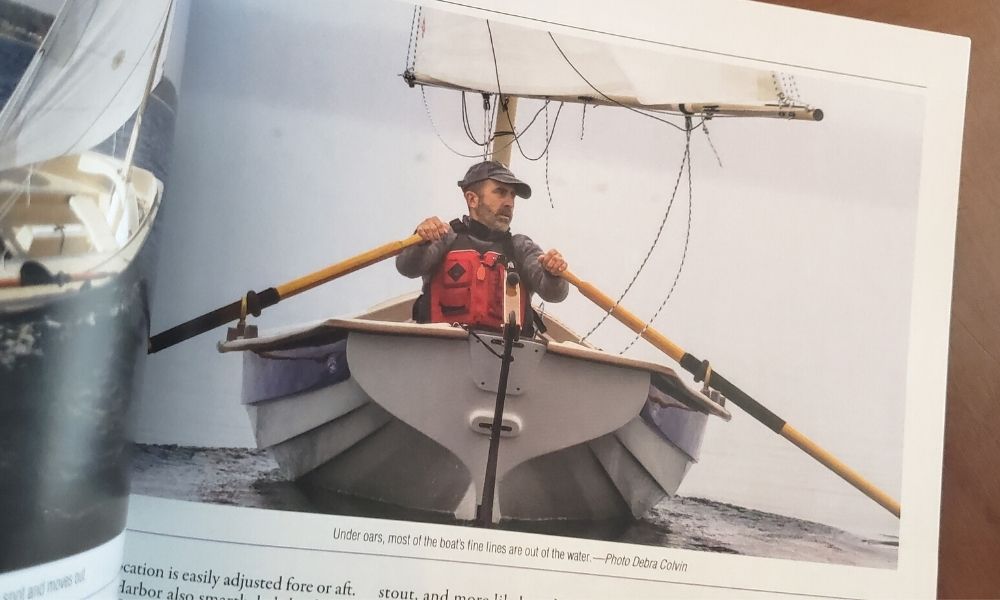
“The Salish Voyager enable[s] the rower to keep speed up with slow, steady strokes. The Voyager’s better rowing ergonomics and smooth sliding seats also improve performance, and with two sliding seat stations, horsepower can of course be doubled.”
Performance Under Sail
“The boat balanced beautifully with a light weather helm, and the lug-rig—well forward and out of the way like the daggerboard—seemed to match the boat perfectly. So good was the light air performance that on approaching the marina we decided to forego the ash breeze in favor of the gentle one, proceeding to tack effortlessly all the way to the dock.”
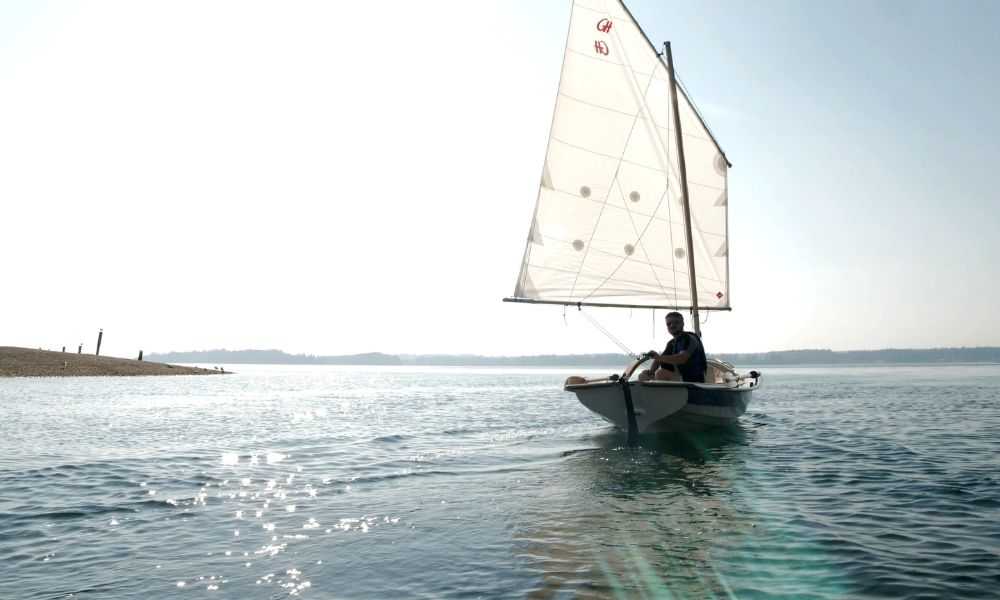
As the review noted, unfortunately there weren’t any good windy days while the SCA folks were reviewing the boat, so they couldn’t comment on sailing the Salish Voyager in stronger conditions. You can see in the footage from our video here on YouTube, filmed in about 15 knots of steady wind.
Trailering & Launching
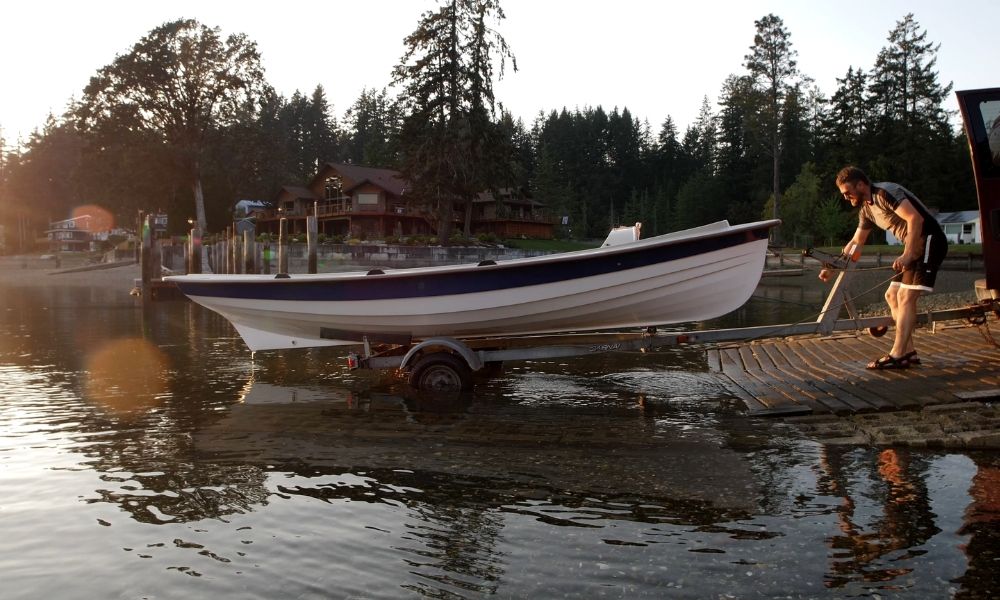
“Given her light weight, low profile, and shallow draft, trailering and launching the Voyager are simple tasks. . . Rigging took about 15 minutes our first try.”
Seaworthiness
“Her versatility, especially the ability to switch quickly from rowing to sailing—or to do both at once from either station—is another inherent seaworthy characteristic of this new design.”
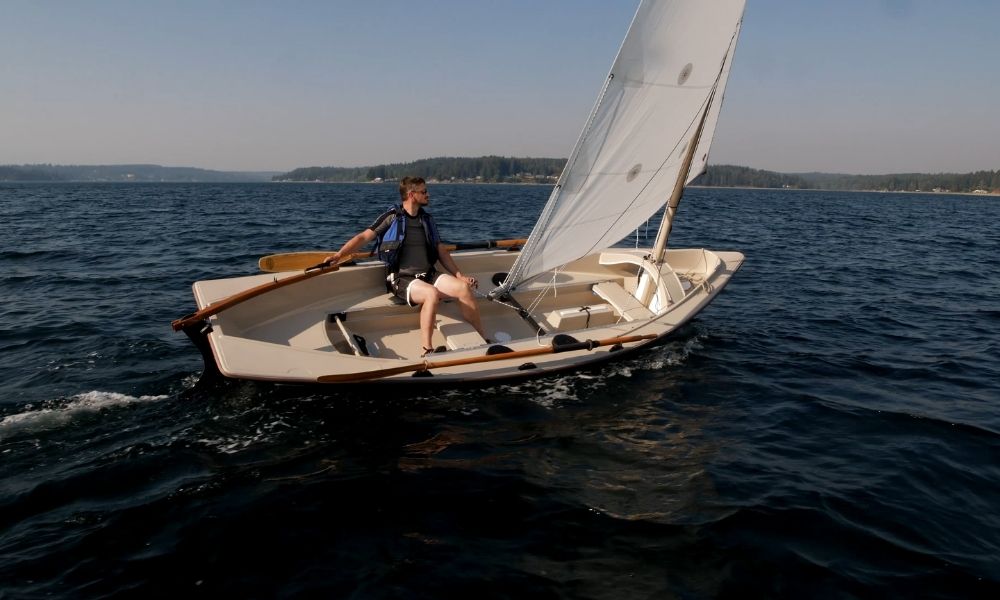
The Salish Voyager scored an impressive 140 points on the SCA Seaworthiness test. The SCA crew noted that the Voyager heels easily, but “settles into her spot and moves out,” and its versatility and performance under sail more than make up for that initial tenderness. Our buoyancy tests also showed that the Voyager is very difficult to capsize and easy to right (See footage of our capsize test on YouTube starting at about 6:28).
Accommodations
“One uncommon feature that adds to the Voyager’s cruising bona fides is the 6’5″-long open footwell which can sleep a singlehander comfortably. And the stowage would be exceptional even for a 20-footer.”

No foolin’! Falk is about 6’2″ and has room to spare, as pictured here. And there’s plenty of storage in the seats (and even under the floor).
Quality
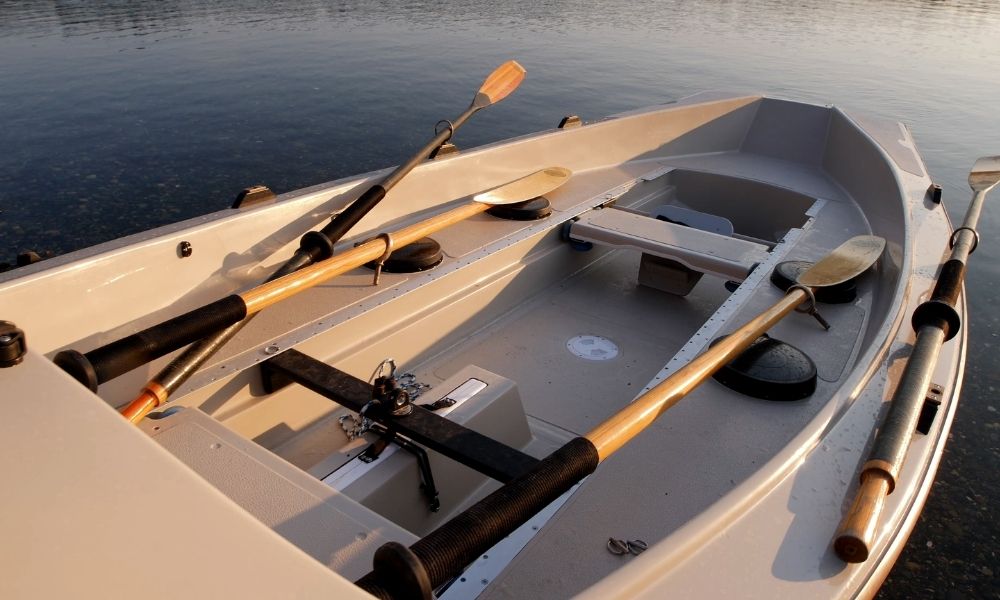
“Fit and finish was excellent—maybe even more refined than some earlier designs—but Gig Harbor Boat Works treats finishes of their boats like they expect them to actually get used, not to hang on the wall, and as such they favor low-maintenance finishes and durable materials over fancy woodwork and exotic detailing.”
Yeah OK, you got us pegged. 😉

Value
“The Salish Voyager’s price tag stacks up extraordinarily well when compared with any vaguely similar production craft.”
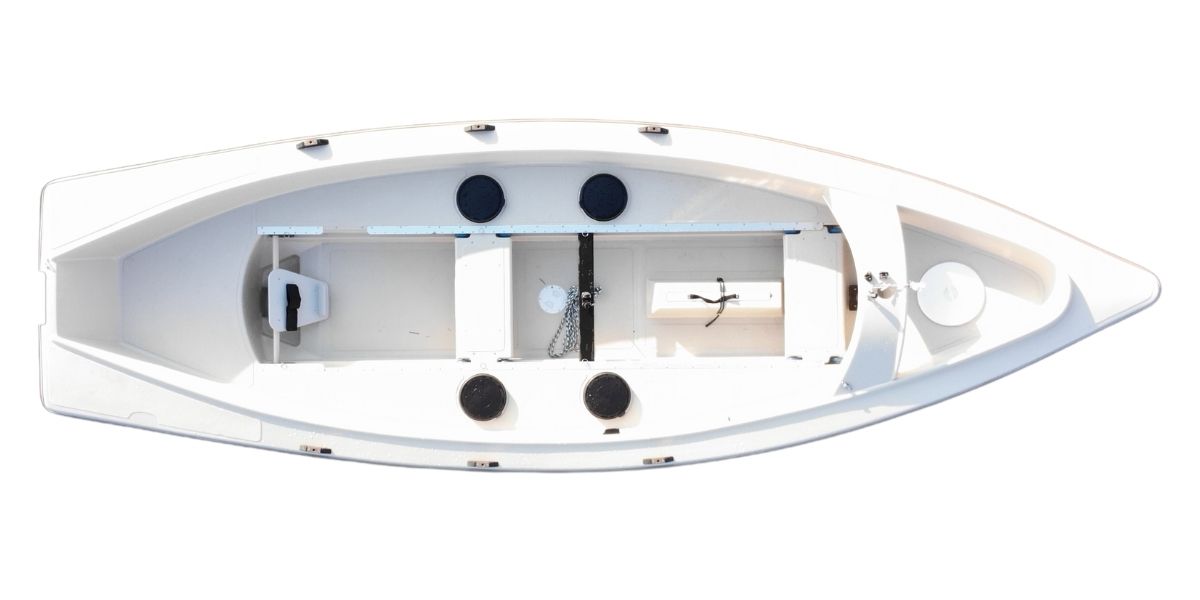
The Bottom Line
“They say the best boat is one you actually use, and the easy trailering, rigging and launching, and especially the versatility of the Voyager, ought to get you on the water regularly. And when it comes time for a real sail-and-oar adventure cruise, you and your crew can load the lockers with gear and rations, check the tidal currents, and shove-off having left the outboard engine and every other unpleasant thing behind.”
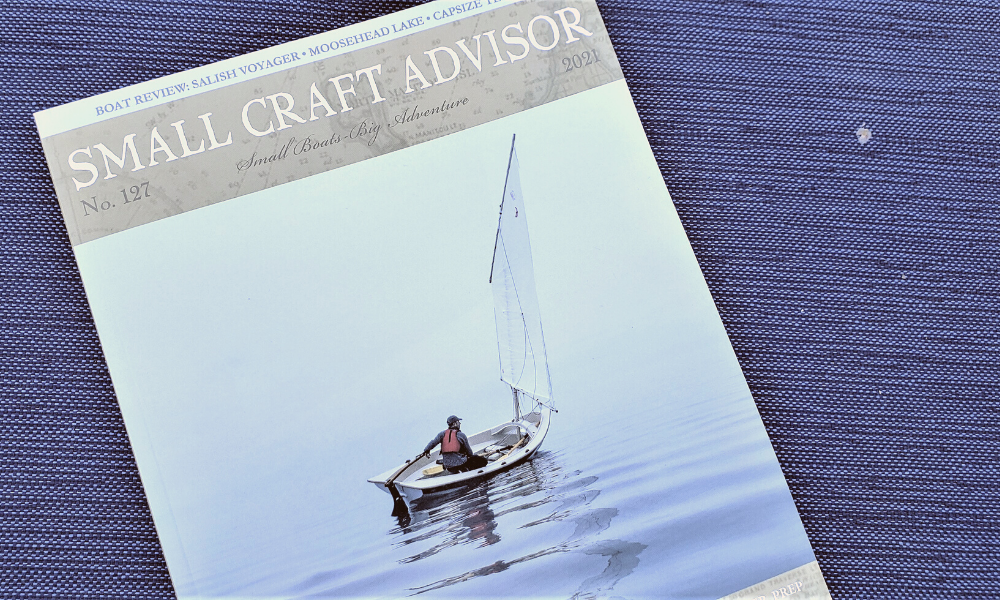
There’s a lot more great insight in the full article… you can find it in Issue no. 127 from Jan/Feb 2021, available in PDF or hard copy from the Small Craft Advisor website.

